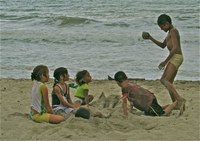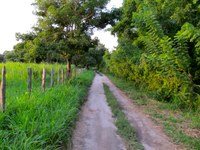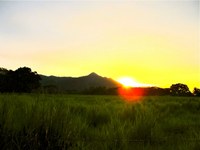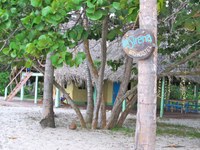Palomino
Palomino Beach Travel Information, Float Trips Palomino River, Real Estate and Tourism in Palomino, Investment, New Business Opportunities, Activities, Camping, Hammock Rentals, Hostels, Restaurants, the Effects of Development on Palomino, Santa Marta Colombia.
Overview
Palomino is located 72km northwest of Santa Marta, and 90km southeast of Riohacha on the main highway the runs along Colombia’s Caribbean coastline. It has approximately 4,200 people living in the village, most of whom earn their living through hand crafts, agriculture, or fishing.
There are two sides of the Palomino story, and while we cannot claim real expertise after visiting the town a few short days, wikipedia’s gruesome depiction of town fails to convey the vast growth potential that Palomino has in the coming decades.
Geography and City Layout
The village of Palomino is divided by the highway that runs through the town, and this is without a doubt the primary lifeline for the village. While part of the village proper approaches the ocean, there is a large swath of beach which is separated from the village by a 1500 meter dirt road. The effect that this separation is inevitably going to have on the towns pending development cannot be overstated.
The real estate and tourism boom is coming to Colombia’s Caribbean coastline. Palomino appears to be the next in line, and it is this large undeveloped area between the village and the ocean that makes us so certain that it will not be overlooked by international developers and retirees. We say it over and over on this site, but there simply aren’t that many areas of the world from which you can enjoy oceans and mountains all at once. On a clear day from Palomino’s beaches, you can see snow-capped peaks of the Sierra Nevadas of Santa Marta, reaching over 5,000 meters.
Tourism and Activities
The Beach of Palomino is not subject to the rip tides that much of Colombia’s coastline experiences, and offers adequate surf-conditions for those with a will for it. The Palomino river also runs through the town, which travelers can float down for a total of 13.000 COP included transportation to the drop off point. Hammock rentals and campsites are also available along the beach for as low as 6.000 COP. Casa de la Rosa is by far the cheapest of these. If you turn left at the gas station in the middle of town and follow this dirt road, it will be the first site you arrive at. While amenities at this site are minimal, they are willing to share everything they have and are amongst the kindest people you will ever meet.
Along the Palomino beach, there are multiple hostels and restaurants that are in the process of opening. While prices are not outrageous, they are 2-3X higher than in the village. While there will certainly be a market for this in the coming years, there are already a number of backpackers who have no problem hiking or renting a bike into town to take advantageous of this price differential. To us, this demonstrates that the local population currently stands to benefit from the spike in tourism and development that is ensuing.
Need for Vision
Palomino is a poor village which suffered a great deal during Colombia’s armed civil conflict. This is apparent visiting the village, but wikipedia's reported statistic of 30% of children dying of sanitation related illnesses, if true, is shocking. It is nevertheless our feeling that a town this size will benefit immensely from the spike in tourism, but it will require developers and entrepreneurs with a vision that incorporates and gives back to the local population. Lets hope this is what plays out.
-
Things to Do and See
Activities, Camping, Hammocks, Float Trips, Beaches, and a variety of fun and interesting things to do and see in Palomino Colombia.
-
Where to Eat
Restaurants, Diners, Beach-Side Bars, in Palomino Colombia
-
How to Get There
Travel and Bus Information to Palomino Colombia












